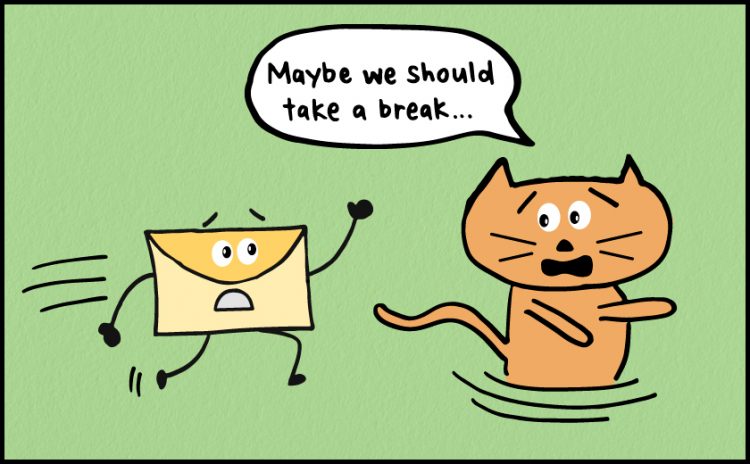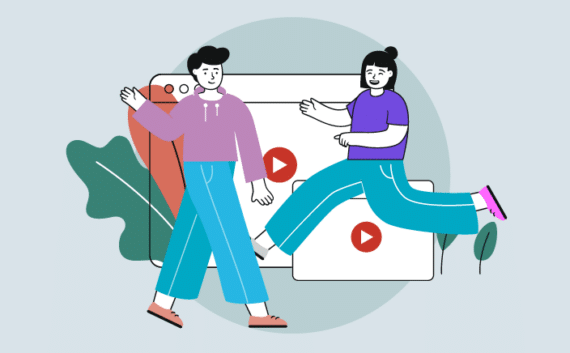
Image by Desiree the intern
What is Offboarding?
Offboarding is the often-overlooked process of ending your relationship with someone who uses your service. It really can make or break a customer’s view of their entire experience with your brand, and your current process could be doing more harm than you think. Think of it as a bad breakup — that final point of contact is the thing that lingers in your mind, regardless of what came before it. When crafting your service’s offboarding experience, it’s important to look at it from your customers’ perspective. It’s important to optimise the experience in order to leave a positive lasting impression (while also identifying areas you can improve).
Why is it important for your Business?
Let’s face it; customers aren’t going to need your service forever. There are many reasons a user chooses to leave a service – whether it’s because of a bad experience, a lack of interest, or they simply no longer need it. That final point of contact with your brand can be a determining factor in whether or not that user will recommend your service to others.
You’ve put in a lot of effort to grow your business and to make their experience with your service a positive one, so don’t let that customer’s last impression ruin all of your hard work. On top of this, the offboarding experience is an opportunity to learn what worked for that customer and what didn’t, which can lead to more effective strategies for keeping customers in the future.
Types of offboarding
The offboarding process can be handled in three different ways – offering your user the option to pause, cancel or delete their account.
1. Pause or Deactivate Account
If a user chooses to pause or deactivate their account, their use of the service is restricted. If they choose to reactivate in the future, everything will still be there waiting for them.
2. Cancel Subscription
Giving the user the option to cancel their paid subscription means the service is either limited to a free version, or the user is unable to use the service. Services like Spotify and online news sites have this option.
3. Delete Account
This is a less desirable option (in comparison to cancelling an account), as it means all of the user’s data will be erased. This option is for when users have no intention of returning to the service and would prefer that no data is kept.
Best Practices for Offboarding
1. Empathise with the user
Ask yourself why a user might be choosing to leave your service. The offboarding process can really help get to the core of any issues that need fixing whether it’s through journey mapping or the creation of customer personas. By empathising with the user and really trying to understand their experience, you can look at the problem of offboarding from a user’s perspective, rather than your own.
2. Don’t restrict the user’s options
Making it intentionally difficult for users to leave your service is just prolonging the inevitable while damaging your reputation in the process. While their decision to leave is probably not going to change, their opinion of your service still can. Restricting their options, (or making them hard to find), can have terrible consequences for your reputation and brand loyalty. Make their options clear — how they can cancel and what are the consequences of doing so?
3. Communicate the benefits of staying
There is no harm in reminding customers what they will be missing out on. Give them all of the reasons they should stay, and let them know what they will lose if they delete their account.
4. Prevent sudden deletion
Make sure your customers know what they’re about to do. Incorporating some form of confirmation into the deletion process (i.e. re-entering the account password) can ensure that all deletions are intentional and considered.
5. Ask for feedback
This is where your service can get the most out of the offboarding process. Using surveys or offering the option to leave a comment can prevent future users from leaving for the same reasons. It also lets them know you care.
6. Offer the option to pause account
Rather than just having a delete option, take a page out of Audible’s book and give users the option for users to pause their account. This way, they are much more likely to return in the future.
7. End it on a positive note
Regardless of the user’s experience is with your business, ensure their final moment with you is a positive one. Thank them for using your service and tell them you hope to see them in the future. This final goodbye, along with a smooth offboarding process, helps to make the most out of an undesirable situation.
If you need help optimising your digital offboarding process – talk to the website experts at NOUS! To get in touch contact us here!





